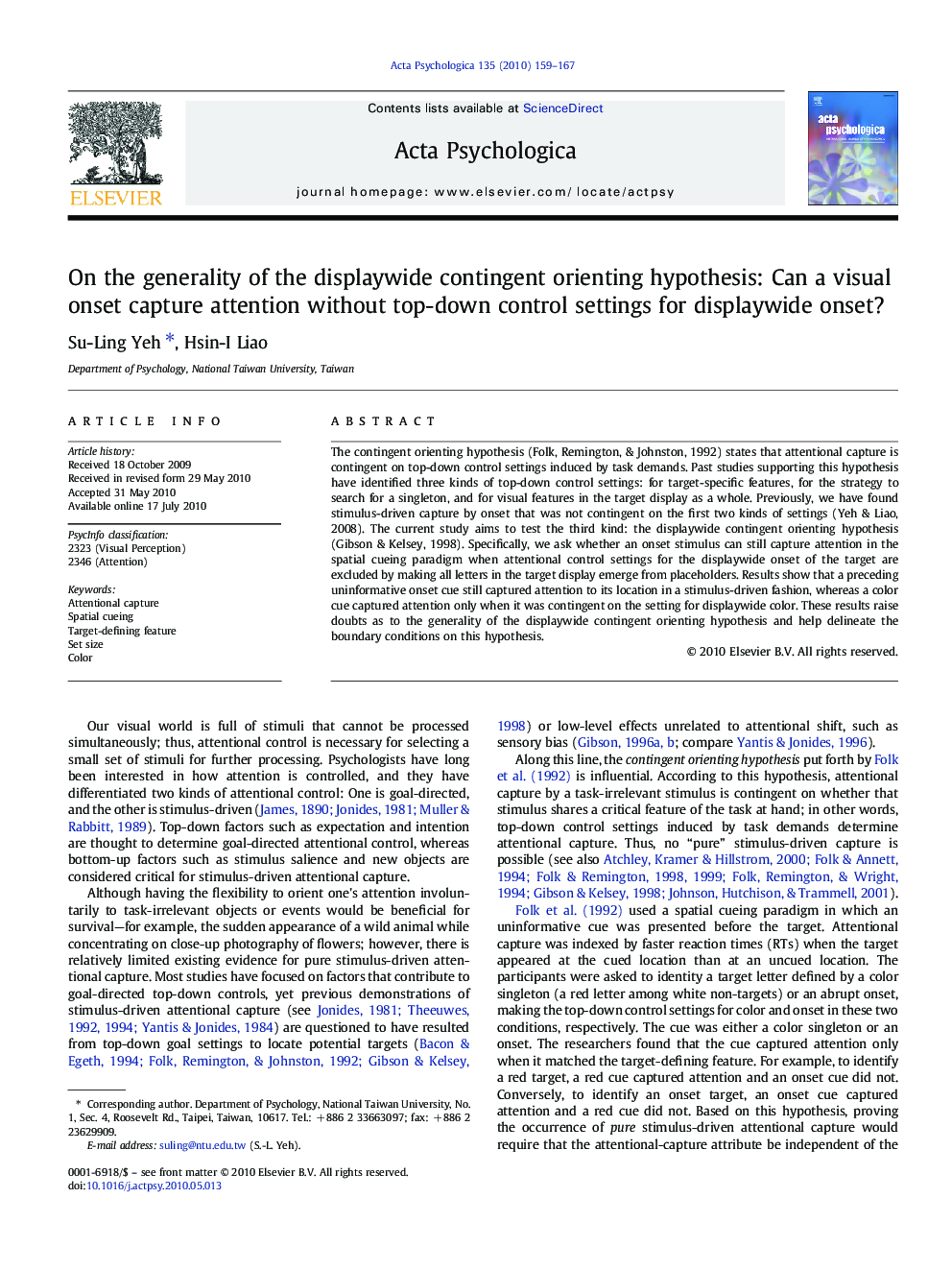| Article ID | Journal | Published Year | Pages | File Type |
|---|---|---|---|---|
| 920253 | Acta Psychologica | 2010 | 9 Pages |
The contingent orienting hypothesis (Folk, Remington, & Johnston, 1992) states that attentional capture is contingent on top-down control settings induced by task demands. Past studies supporting this hypothesis have identified three kinds of top-down control settings: for target-specific features, for the strategy to search for a singleton, and for visual features in the target display as a whole. Previously, we have found stimulus-driven capture by onset that was not contingent on the first two kinds of settings (Yeh & Liao, 2008). The current study aims to test the third kind: the displaywide contingent orienting hypothesis (Gibson & Kelsey, 1998). Specifically, we ask whether an onset stimulus can still capture attention in the spatial cueing paradigm when attentional control settings for the displaywide onset of the target are excluded by making all letters in the target display emerge from placeholders. Results show that a preceding uninformative onset cue still captured attention to its location in a stimulus-driven fashion, whereas a color cue captured attention only when it was contingent on the setting for displaywide color. These results raise doubts as to the generality of the displaywide contingent orienting hypothesis and help delineate the boundary conditions on this hypothesis.
